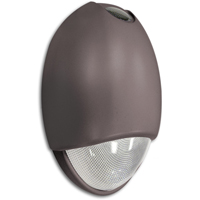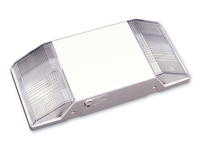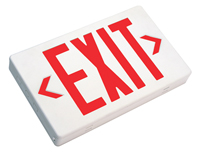Emergency Lights – Standards and Applications
We take electricity for granted, unaware of the fact that it plays such a vital role in our lives that it is almost impossible to get through the day smoothly without it. It is only when we’re in dark that we realize the importance of having light around us, especially during an emergency.
What can we rely on when the lights are out and there’s an emergency?
Emergency lighting comes in handy at the time of well, an emergency! Events when there’s a power outage and you have to quickly vacate a building during fire, poor weather conditions, natural disasters etc., Emergency lights become life savers.
Emergency Light & Emergency Lighting
Emergency Light is a battery powered lighting device that illuminates automatically when there is a power cut in a building.
Emergency Lighting is also called egress lighting and is required as a safety measure in commercial spaces when there’s a power outage. Emergency Lighting helps people find their way out of a building. Illuminated Exit signs are a part of Emergency Lighting.
 Emergency Lights at Home
Emergency Lights at Home
It is a well-established fact that most of the accidents happen at home. And in the absence of electricity the chances of these accidents increase. The kitchen, for example is one place that’s a store for all the hazardous materials. Stove, electrical appliances, electric chords can turn your house into ashes in no time. Similarly, your bathroom is a place that carries the danger of electricity and water together that may result in a short circuit. Kids tripping on chords, pets chewing electrical wires may all lead to a power failure. Moreover it’s not just the unfortunate events inside your house that may result in a power outage, accidents outside home like automobile accidents, falling trees can also disrupt electricity supply to an apartment or an entire block.
In all the above events, Emergency Lights at home becomes absolutely necessary.
Where should you keep Emergency Lights at home? 
It is advisable to have one flashlight per member and extra batteries at home in case the old ones run out on power. Also, flashlights and battery operated lanterns should be kept near your bed. You may want to keep all the emergency supplies at one location but that’s probably not the best idea. If the room where emergency lights and other supplies are stored is inaccessible for some reason due to a crisis, you will not be able to use it. And what good is an Emergency Light if you can’t use it?
It is also important that you test your Emergency Lights at a regular interval and replace batteries of flashlights and other emergency lights when these are no longer working.
Business centers, office complex and all other commercial spaces are required to have not only Emergency Lights but an effective Emergency Lighting System. Moreover, Emergency Lighting needs to be powered by either a generator or battery based backup supply. Emergency Lighting requirements are decided by the local building codes that are set by the National Fire Protection Agency (NFPA).
The NFPA 101 incorporates guidelines for Emergency Lighting and Egress Lighting or Emergency Exit Lights. Section 7.9.2.1 of the NFPA 101 dictates that Emergency Lighting must light up the area for at least 90 minutes after the disruption of the main power supply. The initial level of illumination during these 90 minutes should not drop below an average of 10.8 lux (1 foot candle) along the exit routes at the floor level.
The level of illumination in Emergency Lights at workplace is not allowed to drop below 6.5 lux (0.6 foot candle) at the end of 90 minutes at any point. Also, a uniformity ratio of 40:1 (maximum to minimum) should not be exceeded.
Testing of Emergency Lights at Workplace
Section 7.9.3.1 of NFPA 101 mandates all Emergency Lighting components to be tested using any one of the following three methods-
- First method includes testing of components for 30 seconds at 30 day intervals.
- Second method involves tests to be conducted every year for at least 1½ hours. This test is usually conducted for battery powered Emergency Lighting.
- The third method allows self testing Emergency Lights to perform monthly and annual checks automatically.
It should be noted that before testing Emergency Lights at workplace, employees should be informed about it. Moreover, testing should ideally be done when the building is empty or when there’s minimum employee traffic.
Illuminated Exit Signs at workplace are an important part of Emergency Lighting System. Section 7.10 of the NFPA requires the word ‘EXIT’ to be displayed in 6 inches tall letters. The Exit Sign should provide 5 foot candles of illumination. The Sign must illuminate at all times when people are inside the building. The Exit Signs should have arrows indicating the way to Exit and be placed at all Exit doors and stairs.
Emergency Lighting is vital to your safety during unforeseen events. These humble Emergency Lights are your escape route when the worst happens.
















